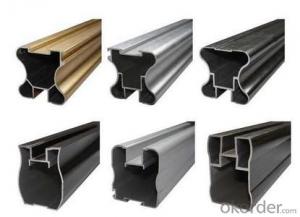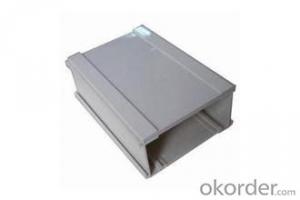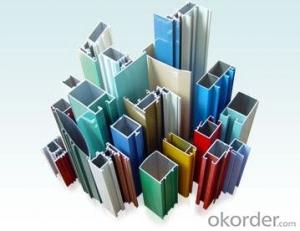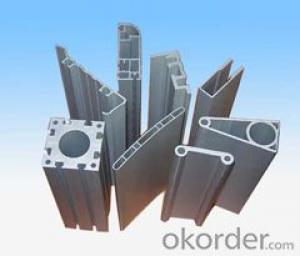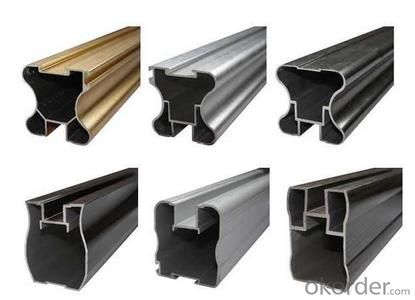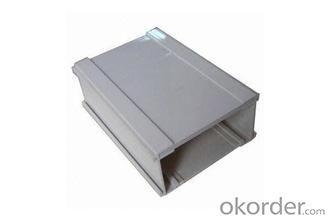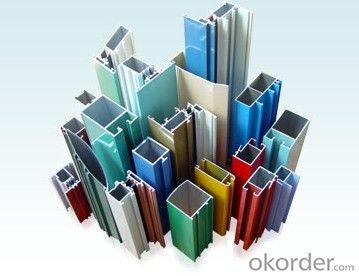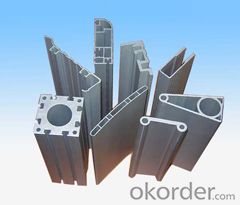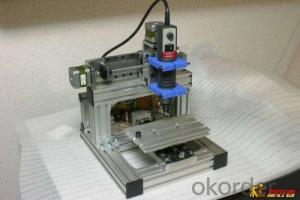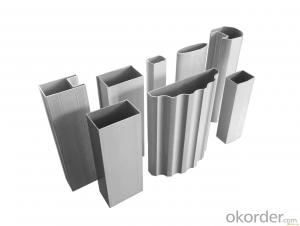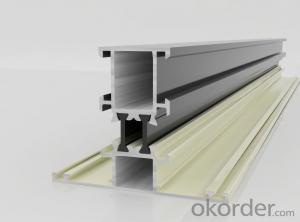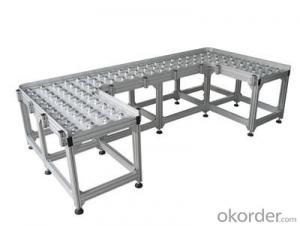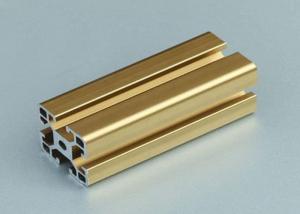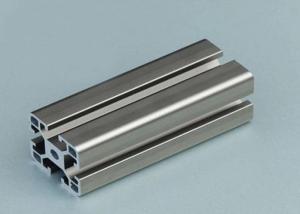Aluminum Channel Profiles 6061, 6063
- Loading Port:
- China Main Port
- Payment Terms:
- TT OR LC
- Min Order Qty:
- -
- Supply Capability:
- -
OKorder Service Pledge
OKorder Financial Service
You Might Also Like
Aluminium is a relatively soft,durable, lightweight, ductile and malleablemetal with appearance ranging from silvery to dull gray,depending on the surface roughness. It is nonmagnetic and does not easilyignite. A fresh film of aluminium serves as a good reflector (approximately92%) of visible light and an excellent reflector (as much as98%) of medium and far infrared radiation. The yield strength of pure aluminium is 7–11 MPa,while aluminium alloys have yield strengths ranging from200 MPa to 600 MPa. Aluminium has about one-third the density and stiffnessof steel. It iseasily machined,cast, drawn and extruded.
Alu Profile:
Material | Alloy 6063,6061,6005or according to customer’s choice |
Temper | T3, T4, T5, T6 |
Surface | Anodize, electrophoresis, powder coating, PVDF coating, wood grain painting, matted, etc. |
Length | Coating 6.5 meters, Anodizing 6.5 meters, Mill finish 5 meters |
Application | Industrial, electrical equipment(TV set, air conditioner, refrigerator, computer), decoration,construction, transportation |
Custom Made | We can package following with customer's request. |
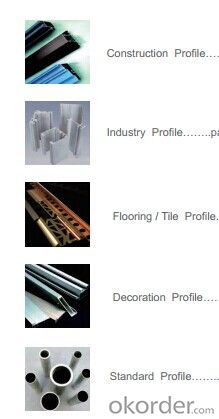
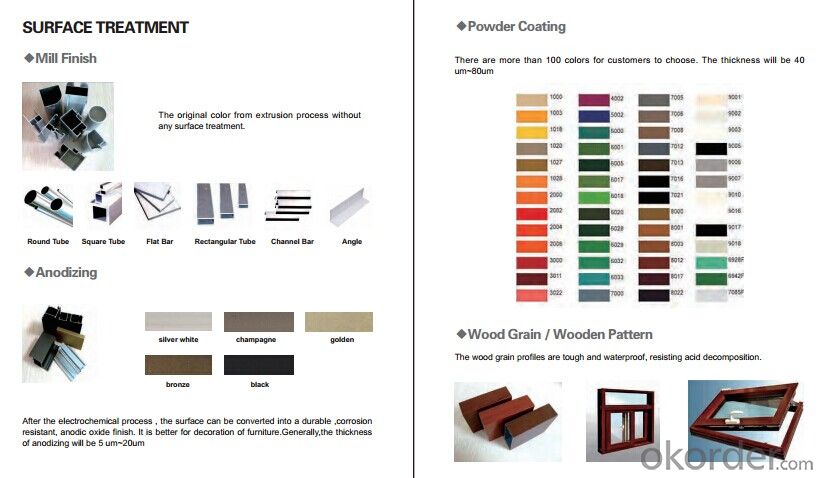
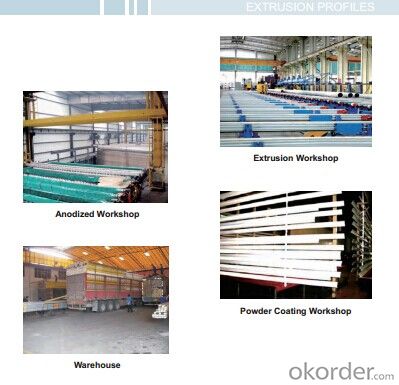
FAQ:
1. What is the form of payment?
Normally 30% TT, L/C at sight
2. Type of quotation?
FOB, CFR, CIF
3. Port of loading?
Guangzhou/Shenzhen port
4. Delivery time?
15-20 days after client’s deposit
- Q: This question asks whether aluminum profiles are appropriate for construction in regions with a high risk of earthquakes.
- <p>Aluminum profiles are indeed suitable for use in earthquake-prone areas. They are lightweight, which reduces the overall weight of structures, making them less susceptible to damage from seismic forces. Additionally, aluminum profiles have high ductility and can absorb and distribute seismic energy effectively, enhancing the building's resilience to earthquakes. Their corrosion resistance and durability also contribute to the longevity of structures in such regions. However, it's crucial to ensure that these profiles are properly engineered and installed according to seismic-resistant building codes to maximize their effectiveness.</p>
- Q: The surface of pure aluminum is relatively soft, too hard to be machined, and the other to be polished. If you want to harden the aluminum parts you produce. What's the way?. Please expert pointing
- Anodic oxidation attempts, on the surface, can form several um thickness alumina protective layers to improve corrosion resistance and abrasion resistance. In addition, if you can change materials, you can choose 2024T4 (Ying Lv).
- Q: Fenglv aluminum material how ah? What aluminum materials do you use for windows and doors?
- Domestic aluminum quality is about the same, mainly you installed in the window accessories, is the key to the life of the service, recommend several brands Bar Reid Jan Ron Lixin spring is not recommended, quality is not very rely on live
- Q: What specific coatings or finishes are necessary for aluminum profiles to withstand cold weather conditions?
- <p>In cold climates, aluminum profiles may require special coatings or finishes to enhance durability and resistance to corrosion. These can include anodizing, which forms a protective oxide layer on the aluminum surface, or powder coating, which provides a hard, durable finish. Additionally, thermal breaks may be incorporated into the design to reduce heat transfer and prevent condensation. It's crucial to select the right finish based on the specific environmental conditions and the intended use of the aluminum profile.</p>
- Q: Can aluminum profiles be used in the construction of exhibition stands?
- Yes, aluminum profiles can be used in the construction of exhibition stands. Aluminum profiles are lightweight, durable, and easy to work with, making them a popular choice for building exhibition stands. They can be easily cut, shaped, and assembled to create custom designs that meet the specific requirements of the exhibition. Additionally, aluminum profiles can be powder-coated or anodized to provide a wide range of finishes, enhancing the aesthetic appeal of the exhibition stand. Furthermore, aluminum is resistant to corrosion and can withstand various weather conditions, ensuring the longevity of the exhibition stand. Overall, using aluminum profiles in the construction of exhibition stands offers flexibility, durability, and a sleek appearance.
- Q: How do aluminum profiles perform in terms of creep resistance?
- Aluminum profiles are known for their excellent resistance to creep, which is the material's tendency to deform under a constant load over time. Compared to other materials, aluminum profiles demonstrate a low creep rate, making them ideal for applications that require long-term structural stability. Additionally, the high strength-to-weight ratio of aluminum profiles contributes to their resistance against creep, allowing them to withstand heavy loads without significant deformation. Nevertheless, it is crucial to acknowledge that the creep resistance of aluminum profiles can be influenced by several factors, including alloy composition, heat treatment, and operating conditions. Therefore, it is essential to consider proper design and engineering considerations to ensure optimal creep performance in specific applications.
- Q: Are aluminum profiles suitable for architectural design that demands a distinctive visual appeal?
- <p>Yes, aluminum profiles can be effectively utilized in architectural design to achieve a unique aesthetic look. They offer versatility in terms of shape and size, allowing for the creation of distinctive designs. Their lightweight nature and high strength make them ideal for various architectural applications. Additionally, aluminum profiles can be easily finished or coated to match specific design requirements, enhancing their visual appeal. Their durability and resistance to corrosion also make them a sustainable choice for long-lasting architectural projects.</p>
- Q: What are the limitations of using aluminum profiles?
- Some limitations of using aluminum profiles include its relatively low strength compared to other metals like steel, making it less suitable for heavy-duty applications. It is also prone to corrosion in certain environments, requiring protective coatings or treatments. Additionally, aluminum profiles may not be as readily available or cost-effective in some regions compared to other materials.
- Q: Can aluminum profiles be used in the construction of playground equipment?
- Indeed, playground equipment construction can incorporate aluminum profiles. Aluminum, a lightweight and resilient substance, proves itself impervious to corrosion, rendering it a prime selection for outdoor usage, including playground equipment. It confers both fortitude and stability, yet remains pliable, enabling the assembly of diverse structures and designs. Moreover, aluminum profiles lend themselves to customization, guaranteeing the playground equipment's safety and efficacy. In summary, implementing aluminum profiles in the construction of playground equipment proffers a dependable and enduring resolution.
- Q: What are the different types of anodizing options for aluminum profiles?
- There are several different types of anodizing options available for aluminum profiles, each with its own unique benefits and characteristics. Some of the most common types of anodizing include: 1. Type I - Chromic Acid Anodizing: This is a thin and non-decorative anodizing process that provides excellent corrosion resistance. It is often used as a primer for paints or adhesives. 2. Type II - Sulfuric Acid Anodizing: This is the most commonly used anodizing process, which produces a thicker and more durable oxide layer. It can be further classified into two subtypes: regular sulfuric anodizing and hardcoat anodizing. Regular sulfuric anodizing provides good corrosion resistance and can be dyed in various colors for aesthetic purposes. Hardcoat anodizing, on the other hand, produces a very hard and wear-resistant surface, making it suitable for applications with high abrasion or wear. 3. Type III - Sulfuric Acid Hardcoat Anodizing: Also known as hard anodizing, it is a specialized process that produces an even thicker and denser oxide layer than regular sulfuric anodizing. This results in enhanced wear and corrosion resistance, making it ideal for applications in harsh environments. 4. Type IV - Boric-Sulfuric Acid Anodizing: This is a relatively new anodizing process that combines sulfuric acid anodizing with a boric acid bath. It produces a thin and hard oxide layer with improved wear resistance and reduced electrical conductivity. 5. Type V - Phosphoric Acid Anodizing: This type of anodizing is typically used for specific applications where a thin, dense, and hard oxide layer is required. It offers good corrosion resistance and can be dyed for aesthetic purposes. These different types of anodizing options for aluminum profiles allow for a range of properties and appearances, making them suitable for various applications such as architectural, automotive, aerospace, electronics, and more. The choice of the anodizing type depends on the specific requirements and desired outcome of the aluminum profile.
Send your message to us
Aluminum Channel Profiles 6061, 6063
- Loading Port:
- China Main Port
- Payment Terms:
- TT OR LC
- Min Order Qty:
- -
- Supply Capability:
- -
OKorder Service Pledge
OKorder Financial Service
Similar products
Hot products
Hot Searches
Related keywords
